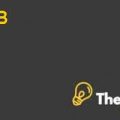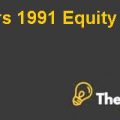
The Walt Disney Company: The Entertainment King
1. Overview – Current Strategy & Situation – Leadership – History
Walt Disney was started by the two Disney brothers, Walter Elias Disney and Roy Elias Disney. Walt Elias’s tenacity despite subsequent failures led this corporation to become a multinational, and renowned global corporation. Walt Elias started this company in 1923, when he was confronted with the Disney Brothers Studio along with his brother ("Company History", 2008). With their first hit Oswald, Disney brothers thought that the copyrights of animation were under their possession; however, that wasn’t the case. Due to this the success for Oswald didn’t last long as rival distributors took over the copyrights in 1927 leaving nothing for the Disney brothers. Despite of their short-lived success, the brother revamped their position in the market with a new and modified version of Oswald, namely Mickey Mouse launching it on the Steam Boat Willie, which then became a famous celebrity within a very short time frame ("Company History", 2008).
Since then the corporation have been through several changes in terms of its size, structure and changes in the current strategies and synergies in which the business operates. The current strategy followed by Walt Disney is to cut costs and produce entertainment material that is traditional and family oriented, which has lagged the company’s ability to produce something new resulting in sequels of the already produced stuff in the market. With an autocratic style of management, a corporation that is growing annually in terms of size, employees and business units, there is only one person to look after everything, Michael Eisner. The strategic challenges faced by Eisner relates to how Walt Disney should manage new synergies under new leaderships from the ABC merger, how should Walt Disney be managed as a brand by threats posed to it from entering into new businesses and how should it mold its operations and product offering from one that is traditional to one that is a contemporary one.
2. External analysis
a. Macro Environment Analysis:
· Summary: PEST Analysis
The United States’ political environment is rigid and one that is highly regulated by several acts that restrict production houses in several ways. The authority that looks on the matter concerning this industry is the Federal Communication Commission. It penalizes if there are violations with respect to cultural aspects of the society etc. The companies that have gone global need to work in compliance to the international rules and regulations as there are punishments for violating others copyrights. In addition to all this, the trends are now moving towards expansion of the existing products to new segments with modification such as adult gaming, 3D film producing technology and bringing in contemporary elements to the existing characters, etc. The society is very concerned about violation of rights of any group including the animal rights etc (Griffin, 2000).
· Summary: Industry Dominant Economic Factors Analysis
It is seen that an increase in work hours has led to an increase in hours that a person can avail for vacations. Moreover, the weak dollar has resulted in increased spending in the markets abroad. It is because the dollar is pegged with most of the currencies due to which domestic spending internally has grown significantly. The economy is speculative with regular ups and downs, peaks and thrusts; therefore, is deemed to be unstable. After World War II , several companies managed to survive but most of them have experienced severe economic and financial setbacks (Griffin, 2000). In addition to all this, the economic factors affecting the movie industry at United States have serious implications, which can’t be ignored as they accumulate high gross revenues from the ticket sales when the box office gets a hit along with theatre concession from film merchandise. The box office grossed $9,408,333,214 on average in the year, depicting high revenues from this source. Concession stands also generate high revenues through branded snacks sales. Along with this, film related merchandise also generates a good chunk of revenues. As cited by LIMA’s, the licensing Letter generates $16 billion annually from the merchandise sold before the film is released, which is approximately 30% of the revenues generated after film releases.
· Summary: Market positions that rivals occupy
The rivals for the company include Nickelodeon and Time Warner’s Cartoon Network. The Disney channel positioned itself in a distinct and narrow target market of 2 to 11 year old kids; whereas, its rivals positioned themselves on the basis of driving market demands for adult oriented cartoons (Griffin, 2000). This has made Walt Disney to stand at the third position behind Nickelodeon and Time Warner’s Cartoon Network. Disney’s emphasis on wholesome programming of myths, cartoons, and fairy tales have been a major ingredient for the above two competitors along with a contemporary garnish. Nickelodeon positioned itself to be the one that digs inside the lives of children at present, portraying their lifestyle, their ..................
This is just a sample partial case solution. Please place the order on the website to order your own originally done case solution.













